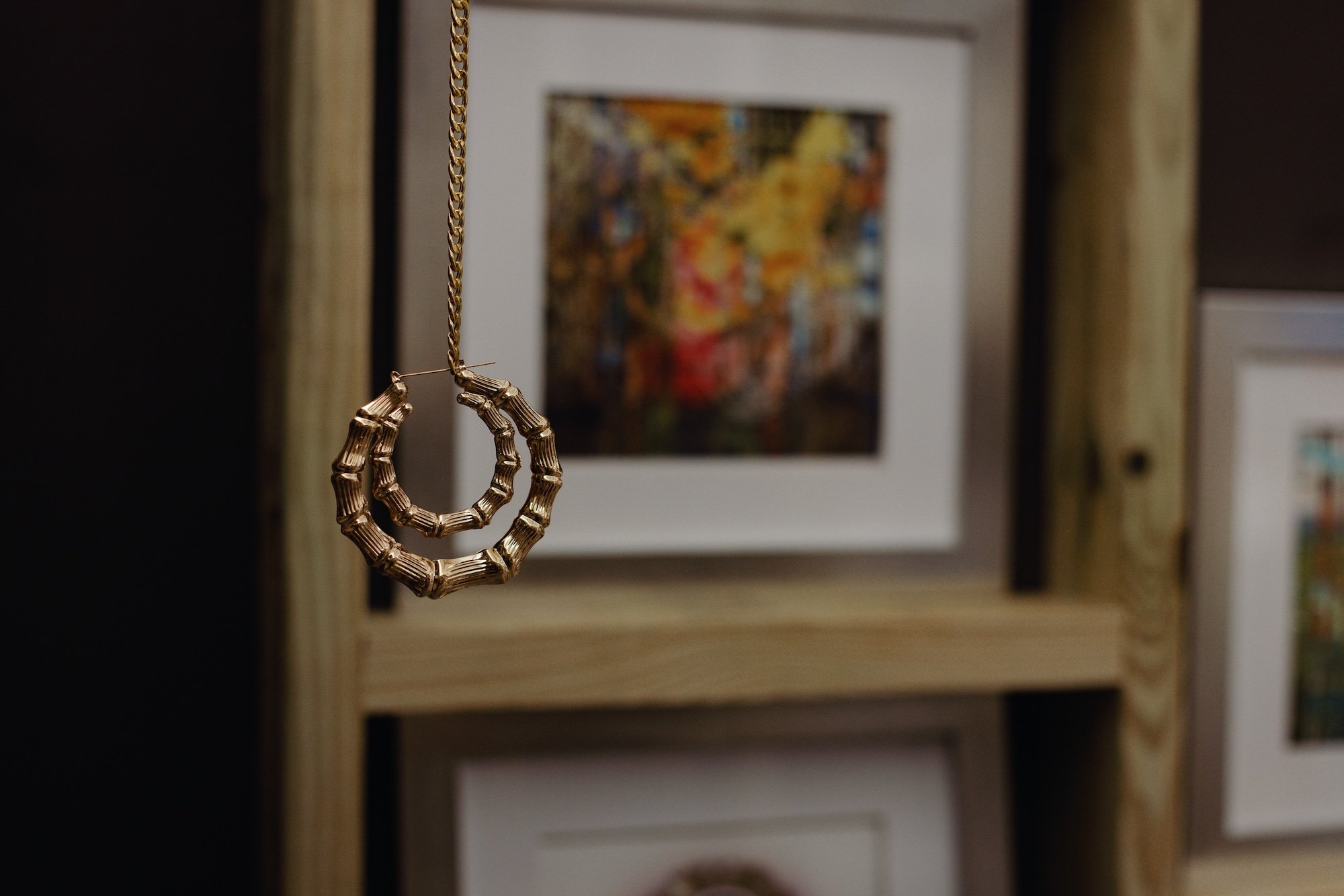
Queen of the Swamp
@ The Nest Gallery
Sydney Maubert’s Queen of the Swamp , acknowledges Miami’s Bahamian history and its vital ties to a cultural geography of Caribbean and Southern aesthetics.
Listen to Sydney speak on her installation below.
-
This installation Queen of the Swamp acknowledges Miami's Bahamian history and its vital ties to a larger cultural geography of Southern and indigenous aesthetics. It draws upon Miami's history of Bahamian laborers' construction of Miami's infrastructure on porous rock and their present descendants' influence on Miami-based culture, a genre of musical and propriety rooted in Miami's Bahamian neighborhoods and heritage. In many ways. Miami's black and indigenous communities are the instigators of Miami's original architecture, infrastructure, and present culture. The history of African and indigenous investments and intersectionality solidarity, and oppression were made in the Everglades. The Everglades National Park archives show listings of the Bahamian and Jamaican immigrants who lived in the park on Long Pine Key. In response, this work is interested in identifying a Miami architectural vernacular and uses its aesthetics as a solution to our swamp lands a woeful reputation as being uninhabitable. The architecture of this installation nods to the long history of marronage and Miami's relationship with the historical present. Miami was once a significant location in the Saltwater Railroad, which also ran through the park itself. This historic connection allows research and discussion from this work to expand from the Everglades and to traverse a larger cultural terrain, including the Caribbean, Florida, Georgia, and the Carolinas. At the same time, this installation examines Bahamian contributions and legacies while creating new architectural possibilities that emerge within aesthetics of impropriety.
The installation draws upon Miami's history of Bahamian laborers' construction of Miami's infrastructure on porous rock and their present descendants' influence on Miami Bass culture, a genre of musical impropriety rooted in Miami’s Bahamian neighborhoods. This work is interested in identifying a Miami architectural vernacular and uses its aesthetics as a solution to our swampland’s woeful reputation as being uninhabitable. Miami was once a significant location in the Saltwater Railroad, which allows research and discussion to traverse a larger cultural terrain, including the Caribbean, Florida, Georgia, and the Carolinas. This proposal examines Bahamian contributions and legacies while creating new architectural possibilities that emerge within aesthetics of impropriety.
About Sydney Maubert
Sydney Rose Maubert is a Miami architect, artist, and professor. She holds post-professional and professional degrees in architecture from Yale (2022) and the University of Miami (2020), with double minors in writing and art. She has received several awards including the Yale Moulton Andros Award (2022), and the University of Miami Alpha Rho Chi Award (2020). She is the founder of Sydney R. Maubert LLC., her art and mural practice.
Her scholarly research interests are architecture, geography, and cultural production in the Caribbean and American South. The work is largely shaped by black studies, gender studies, decolonial studies, history, and cultural geography.
Currently, Sydney Rose is the predoctoral fellow at Cornell's Strauch Fellowship, where she will be teaching and producing research (Fall 2022- ongoing). Her research explores racial-sexual perception in the built environment.
Images from the exhibit can be seen below. The exhibit will be shown in the AIRIE Nest Gallery at the Ernest F. Coe Visitors Center in the Everglades National Park. The gallery is free for all visitors, Monday through Friday 9 am - 5 pm EST.
On July 29th, 2023, AIRIE held “Queen of the Swamp” a two-part event that began with the opening of Queen of the Swamp in which over seventy people came to enjoy the work. See the recap and photos from the event.
Images courtesy of the artist and photographer Passion Ward.























